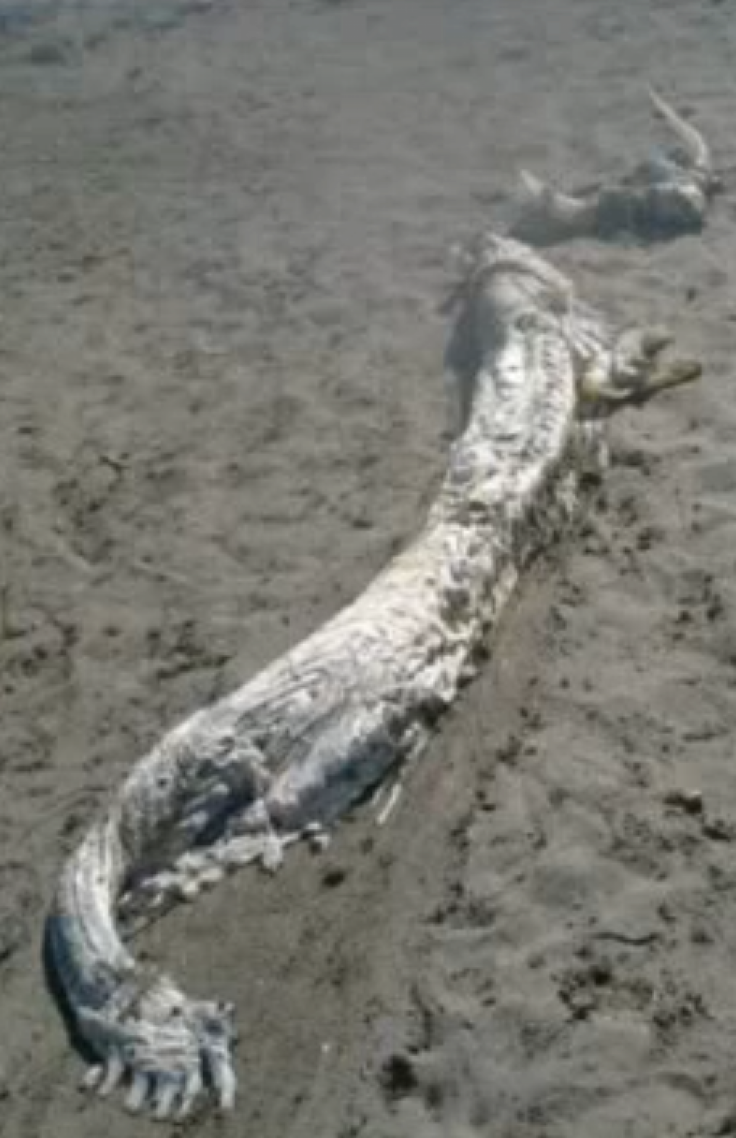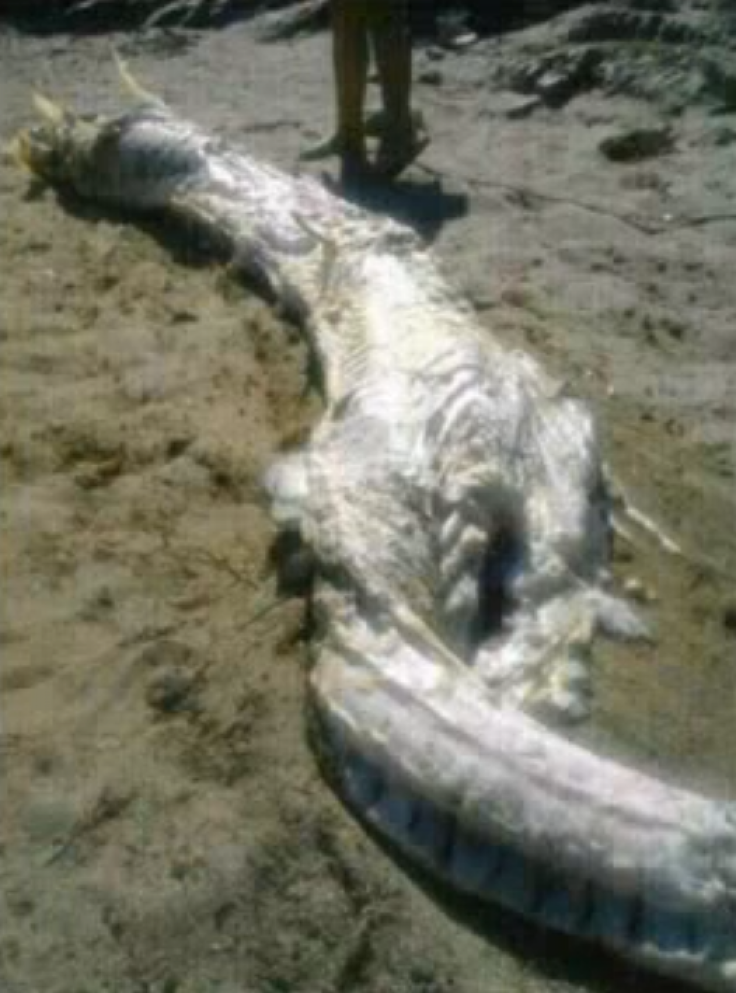Horned ‘Sea Monster’ Washes Ashore In Spain, 13-Foot ‘Water Dinosaur’ Might Be A Shark [PHOTO]

Has Nessie made landfall in Spain?
A 13-foot carcass of a horned sea serpent surfaced on Luis Siret Beach in the Andalusian village of Villaricos in Spain last week. Experts have yet to confirm what kind of animal it is, but it has conjured comparisons to the legendary Loch Ness monster.
“It’s hard to know what we’re dealing with,” PROMAR (Programa en Defensa de la Fauna Marina-Sea Life Defense Program) spokesman Paco Toledano told Inexplicata. “It’s very decomposed and we cannot identify what it is.”
The remains were first found by a woman who came across the creature’s head. "A lady found one part, and we helped her retrieve the rest," Civil Protection coordinator Maria Sanchez said, according to LiveScience. "We have no idea what it was. It really stank, as it was in the advanced stages of decomposition."

Beachgoers snapped photos of the mysterious serpent, calling it the ”Loch Ness Monster,” a “water dinosaur” and “horned sea monster.” Many images went viral online.
Different PROMAR laboratories have collected samples of the body to analyze, but the decomposing parts of the “serpent” were buried for hygienic reasons, ThinkSpain.com reports.
“Perhaps we could learn something more from the bones, but to be precise, it would be necessary to perform a genetic analysis, which is very expensive, and who would pay for it?” Toledano said.
Some experts speculate the remains could be those of a thresher shark, a slender shark with a whip-like tail that can be deadly. "It's hard to tell," David Shiffman, a University of Miami shark researcher who blogs about marine biology on Southern Fried Science, tweeted to NBC News, "but the official guess that it could be a thresher shark seems plausible."
Florida State University ichthyologist Dean Grubbs said he's solved the mystery. "That is definitely a shark skeleton," Grubbs told NBC News in an email. "The elements toward the back were confusing me, but those are the lower caudal fin supports. The 'horns' are the scapulocoracoids, which support the pectoral fins."
© Copyright IBTimes 2024. All rights reserved.












